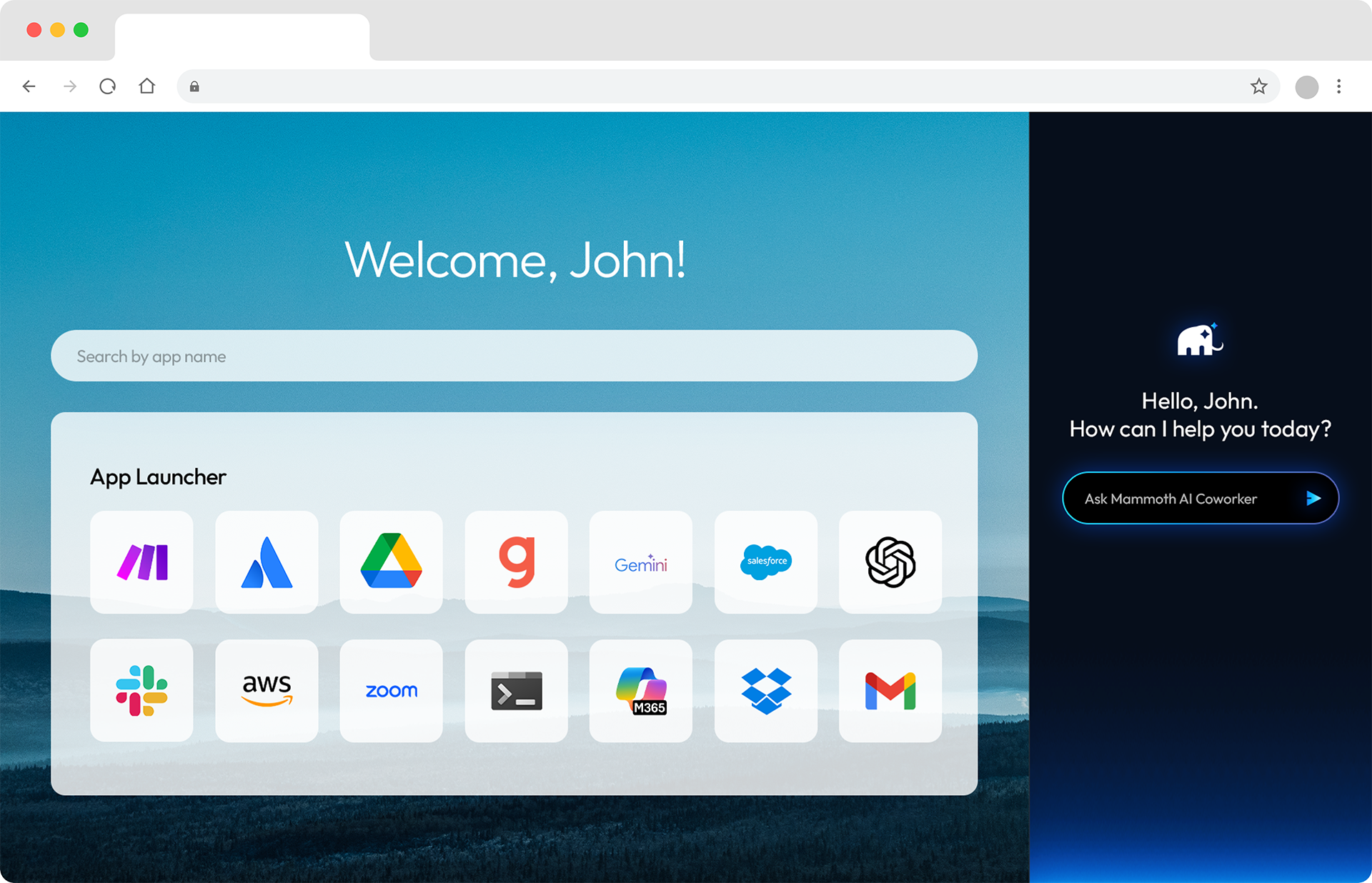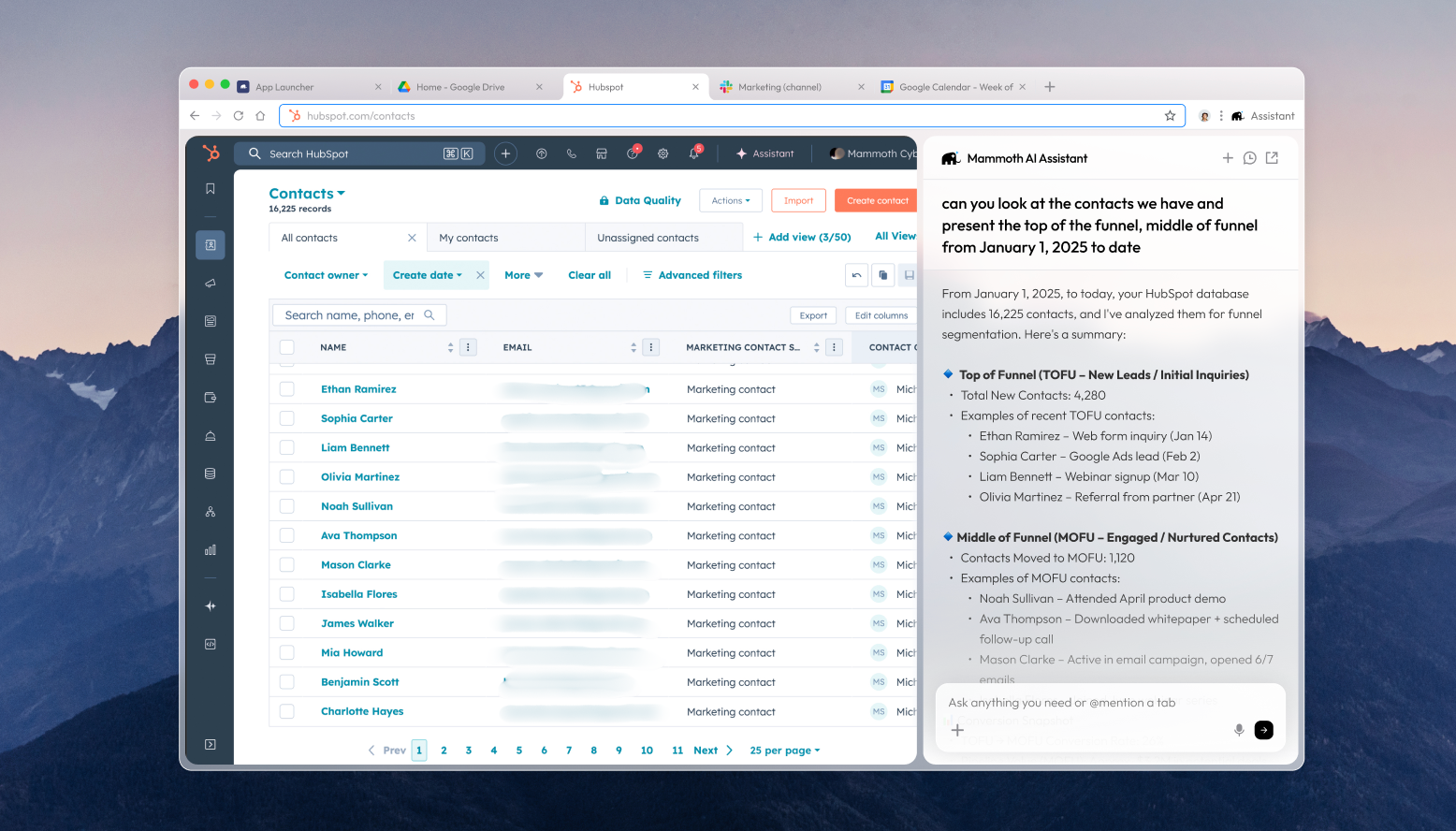“In the AI era, trust is a vulnerability. Enterprise browsers empower us to protect critical systems with relentless verification and real-time control.”
- April 20, 2025
Deterring Enterprise AI Risks with Enterprise Browser
— Dr. Chase Cunningham, Strategic Advisor of Mammoth Cyber

Introduction
As enterprises increasingly integrate artificial intelligence (AI) into their operations, the attack surface expands, introducing complex cybersecurity risks. I’m Dr. Chase Cunningham, Strategic Advisor for Mammoth Cyber, and with over 20 years of experience in cyber forensics, analytics, and operations across the NSA, CIA, and FBI, I’ve seen how emerging technologies can be both transformative and vulnerable. The rise of AI-driven systems demands a proactive security approach, rooted in the principle of never assuming trust and always verifying access. In this blog, I’ll explore how an enterprise browser can serve as a critical tool for mitigating AI-related risks, drawing on the philosophy of prioritizing protection over reaction.
The Growing AI Threat Landscape
AI systems are becoming prime targets for cybercriminals. From supply chain attacks to API exploitation, adversaries are leveraging AI’s complexity to bypass traditional security measures. Many organizations lack visibility into their AI ecosystems, leaving gaps that attackers exploit with alarming frequency. The stakes are high—disrupted operations, data breaches, and financial losses are all too common when security lags behind innovation.

Enterprise Browser: A Zero Trust Solution
An enterprise browser offers a robust framework for securing AI-driven environments by enforcing strict access controls and continuous monitoring. Unlike traditional browsers, enterprise browsers are designed to align with the Zero Trust principle of protecting critical data and infrastructure first. They act as a secure gateway, isolating sensitive AI systems from unverified users and devices. Key features include:
- Granular Access Controls: Enterprise browsers restrict access to AI applications based on user identity, device posture, and context, ensuring only authorized entities interact with sensitive systems.
- Real-Time Monitoring: By tracking API interactions and user behavior, enterprise browsers detect anomalies that could indicate a breach, such as unauthorized data access or lateral movement.
- Segmentation: They isolate AI workloads, preventing attackers from exploiting a single point of failure to compromise the entire network.
- Data Protection: Encryption and data loss prevention tools safeguard AI-generated outputs and proprietary datasets, reducing the risk of exposure.
This approach shifts the focus from reacting to threats to proactively securing the “Protect Surface”—the critical assets that matter most to the business.
Empowering Guardian Agents
Enterprise browsers are a force multiplier for guardian agents—AI-driven or human-augmented systems tasked with monitoring and protecting enterprise environments. By providing real-time visibility into API interactions and user behavior, enterprise browsers enable guardian agents to detect anomalies, such as unusual data transfers or unauthorized access attempts, with precision. They enforce Zero Trust policies, integrating with identity systems to verify users and devices, reducing the cognitive load on agents. Additionally, browser-based segmentation isolates AI workloads, limiting the attack surface guardian agents must monitor. This synergy ensures guardian agents can focus on high-priority threats, enhancing their effectiveness in securing complex AI ecosystems.
Practical Steps for Implementation
To effectively deter AI risks using an enterprise browser, organizations must take a structured approach:
- Inventory Assets: Identify all AI systems, APIs, and data flows within the enterprise. Without a clear map of assets, security remains incomplete.
- Deploy Enterprise Browser: Implement a browser solution with Zero Trust capabilities, ensuring it integrates with existing identity and access management systems.
- Monitor Continuously: Use real-time analytics to track API calls and user interactions, flagging suspicious activity for immediate investigation.
- Segment Networks: Apply micro-segmentation to isolate AI systems, limiting the blast radius of potential breaches.
- Educate Teams: Train employees on secure browsing practices and the importance of adhering to Zero Trust policies.
The Future of AI Security
As AI adoption accelerates, so does the need for innovative security solutions. Enterprise browsers, grounded in the philosophy of never trusting and always verifying, provide a scalable way to protect AI ecosystems. By combining advanced monitoring, segmentation, and access controls, they empower organizations to stay ahead of evolving threats. My work at Mammoth Cyber focuses on operationalizing such solutions, ensuring enterprises can harness AI’s potential without compromising security.
Conclusion
The integration of AI into enterprise operations is a game-changer, but it comes with significant risks. An enterprise browser, built on the principle of protecting critical assets first, offers a practical and effective way to deter these threats. By enhancing guardian agents and enforcing Zero Trust, enterprise browsers secure AI systems, safeguard sensitive data, and maintain operational resilience. For more insights on securing your enterprise, visit Mammoth Cyber.
Mammoth Cyber
Ready to leave VDI behind?
Explore how the Mammoth Enterprise Browser secures GenAI development workflows and accelerates developer velocity—without compromise.
Don’t miss these
August 22, 2025
Security
Enterprise AI Browsers: Rocket Fuel for the Business—And a Loaded Gun Without Zero Trust
Subscribe to our
monthly newsletter
Be the first to know what’s new with Mammoth Cyber. Subscribe to our newsletter now!
Follow us
© 2025 Mammoth Cyber. All rights reserved.
EULA | Terms | Privacy Notice


